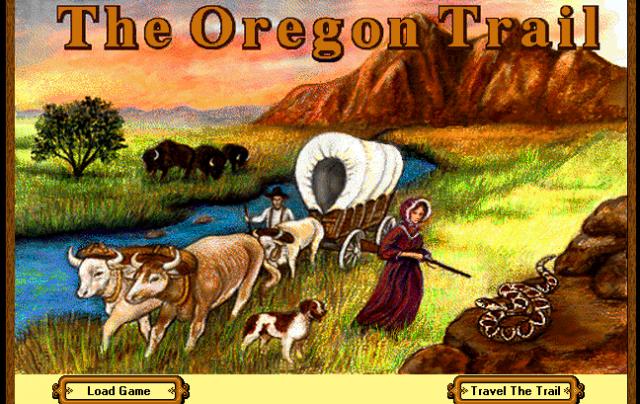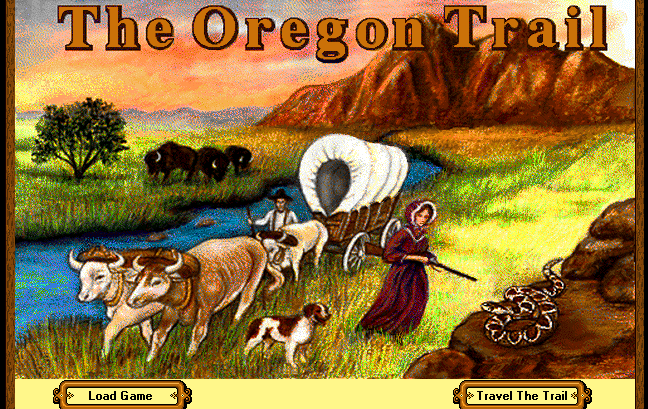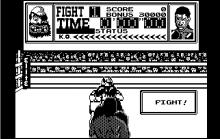The Oregon Trail
How to play The Oregon Trail
Each game uses different controls, Games can have combination of mouse,keyboard and Joystick.
The Oregon Trail Description
The Oregon Trail is an edutainment computer game about American pioneer life that has a long history in North American school districts and homes. The game was inspired by the real-life Oregon Trail and was designed to teach schoolchildren about the realities of 19th century pioneer life on the trail. The player takes the role of a party of people, of a selected profession, traveling across the Oregon Trail in a Conestoga wagon. The success of the game has spawned numerous sequels.
The first version of the game was made in 1971 and was designed for the teletype machines operating at Carleton College. One of the original developers, Don Rawitsch, later began working at the state-funded Minnesota Educational Computing Consortium (MECC) in 1974, where he introduced the game. Oregon Trail was distributed through the consortium to educational institutions. It became a very common program for Apple computers in public schools during the mid-1980s and 1990s. Later versions were distributed by Brøderbund after MECC was sold to The Learning Company.
The game is initially set in Independence, Missouri in the year 1848, which is the start of the Oregon Trail. The player(s) is presented with a series of menus determining the profession, purchases, and names of party members. The player can choose to be a banker from Boston, a carpenter from Ohio, or a farmer from Illinois. While future games in the Oregon Trail series featured a larger variety of character types with more variation in their strengths and weaknesses, there are only two variables that define these three types of character: amount of money at the beginning (banker has the most, farmer has the least, carpenter is between the two), and the multiplier applied to a player's final score (farmer has the highest, banker has the least, carpenter is in between). Characters with more money are generally considered easier to play, as there is a buffer against food shortages and wagon accidents, should they occur. This can be considered historically unrealistic, as many professionals (like those in the Donner party) could not aptly adapt to the wilderness surroundings. Players then buy equipment, oxen, food, and ammunition for the journey. It is also recommended for players to purchase spare parts, such as extra wagon axles and yokes.
Random encounters and decision making
The Oregon Trail gives children plenty of opportunities to rationally think about the situation, giving many options and many possible consequences for each event, thus building problem solving skills. The initial choice players make, and can constantly change if wished, is the pace of the oxen. A faster pace will allow the party to reach Oregon sooner, granting time bonuses. Moreover, the trail becomes much more difficult to travel when encroaching upon the winter months. However, a faster pace will result in a higher probability of wagon parts breaking or oxen dying. A similar set of choice is given for the amount of food to be distributed among the family; a severely reduced diet will result in a higher chance of members succumbing to illness and/or dying.
Along the way, numerous random events can occur. Friendly or hostile Native Americans might be encountered, which could result in a gain or loss of supplies. Random events include: a sudden onslaught of disease (most infamously dysentery), a bounty of wild fruit, banditry of goods or supplies, sudden inclement weather, and spoiling of food supplies. Furthermore, at each river the player is given a choice to pay for a ferry (which costs money), fording (which is dangerous, as the river wagon parts might break), or in some circumstances, waiting for low-tide (which reduces time available).
Periodically, the wagon train stops at outposts along the journey, where goods might be purchased at ever-increasing prices, and where players can learn historical facts about each location. Such stops include Chimney Rock and Fort Hall. At any point between the disparate outposts and landmarks, players can rest, trade with passing travelers and natives, or hunt; though excessive hunting in one area leads to a scarcity of wildlife. Over-hunting was explicitly allowed in order to show children the excess and effects of such occurrences. In fact, the shooting of a buffalo yields more meat than is possible to carry aboard the player's Conestoga wagon. At the Columbia River, the player is presented with a different set of choices to cross the river. It is not possible to ford the river; instead the player can opt to float downstream in a semi-arcade mode, which is uncharacteristic to the rest of the game. In this mini-game, the player must steer the wagon on a raft, while avoiding rocks.
MECC has followed upon the success of The Oregon Trail with similar titles such as The Yukon Trail and The Amazon Trail. The original title has been re-released many times, for different platforms and on different media; it is currently up to the fifth edition.
An entire generation of schoolchildren grew up on the various incarnations of The Oregon Trail. Thus, it has entered popular culture. Characters suddenly dying of a disease, such as cholera and dysentery, or drowning while trying to ford across a river are plot aspects that are fondly remembered. The hunting mode is also known as being the most violent game available to play within a K-6 school environment, until the mass proliferation of internet access.

The Oregon Trail - additional information
















